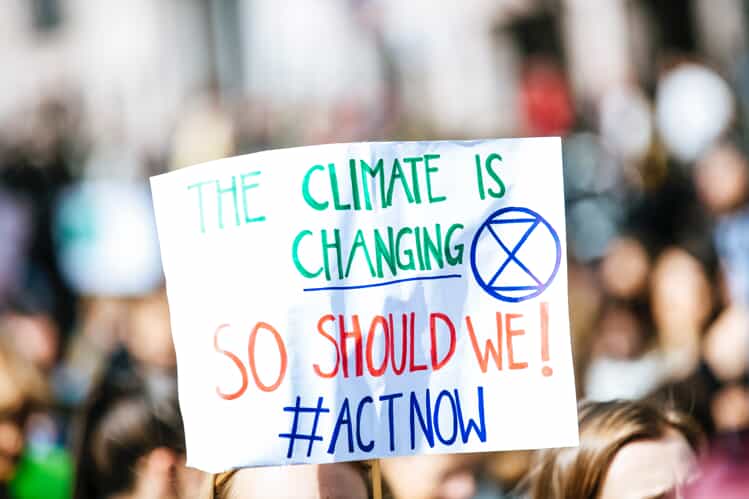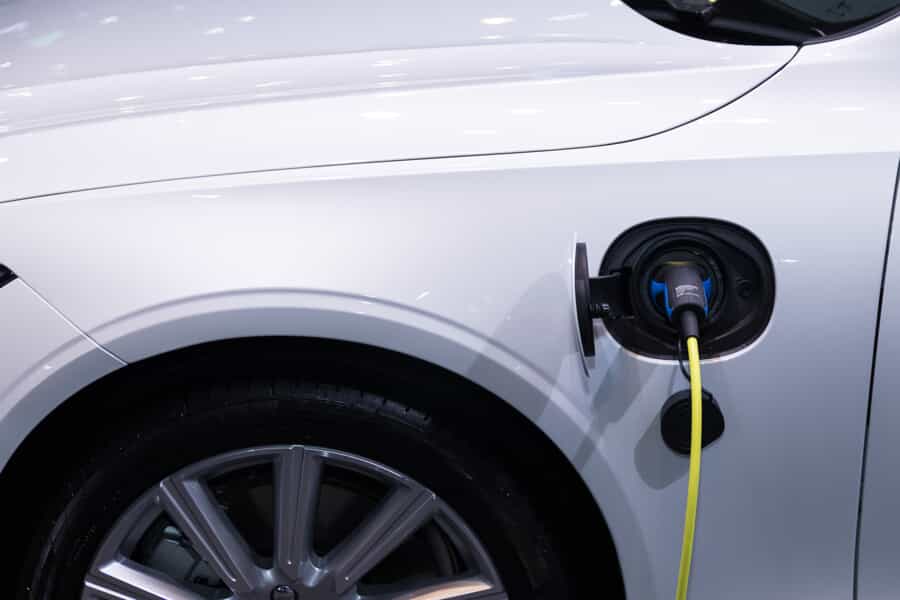6 Ways Electrification is Leading the Way to a Cleaner Future

{alt text: a banner being held up in a crowd that says the climate is changing, we should too. Act now.}
The transition to cleaner energy sources is no longer a luxury—it’s a necessity. The planet is sending clear distress signals, urging us to reevaluate our energy sources. Enter electrification, a powerful tool in our arsenal to combat climate change.
Why Do We Need Electrification?
Addressing Climate Change
At the heart of our warming planet is the significant amount of greenhouse gas emissions from burning fossil fuels. These fuels, used in virtually every sector, are the primary culprits. Electrification, however, offers a glimmer of hope. By switching from these carbon-intensive sources to renewable electric power, we can drastically reduce emissions.
Improving Air Quality
Beyond carbon, burning fossil fuels, especially in vehicles, releases a cocktail of harmful pollutants. From smog to particulates, these pollutants cause a host of health problems, especially in densely populated cities. Electrifying our transportation and industries doesn’t just cut carbon; it directly contributes to cleaner air and improved public health.
Economic Incentives
Electrification isn’t just an environmental move—it’s smart economics. With the shift towards electric systems, there's potential for creating numerous jobs in the renewable energy sector. Moreover, less reliance on imported fossil fuels means more resilient economies.
1. Electrification of Transport

Electric Vehicles (EVs)
These aren't just sleek, modern cars. They are the future of transportation. One might wonder, why the fuss? Well, EVs, unlike their gasoline counterparts, don't spew out exhaust emissions. Plus, they're quiet! Technological advancements are driving down battery costs, increasing driving ranges, and shortening charge times. As if these perks aren't enough, more towns and cities worldwide are building EV charging stations, making them as convenient as traditional fuel stations.
Public Transport
Imagine the big, noisy bus you wait for every morning being replaced by a quiet, smooth electric one. Cities globally are embracing electrification catching on to electric buses that reduce urban noise and improve air quality. Similarly, trains powered by electricity instead of diesel are proving to be not only environmentally friendly but also faster and more efficient.
2. Electrification of Homes and Buildings
Think of a house. Now, imagine it running entirely on electricity. That's not some sci-fi concept; it's becoming our reality. When we talk about heating and cooling, electric heat pumps are like the superheroes of temperature control. They can extract heat from the outdoors and bring it inside during winters, and do the reverse in summers.
As for cooking, induction stoves are speedy chefs. They heat pots and pans directly, cooking food faster and more uniformly than gas stoves. Plus, they don't release harmful combustion gasses indoors.
3. Electrification in Industries
Historically, industries like steel, cement, and chemicals have been synonymous with heavy emissions. Why? They relied on processes using coal or other fossil fuels, which release a significant amount of carbon dioxide when burned.
Take the steel industry, one of the largest carbon dioxide emitters globally. The traditional method of producing steel involves blast furnaces, which use coal as a primary energy source. Now, technology has evolved, and industries are transitioning to more sustainable methods. Electric arc furnaces are becoming popular as they use electricity to melt scrap steel and convert it into new steel. If this electricity is derived from renewable sources, the carbon footprint dramatically drops. It's a monumental shift - akin to a food lover swapping a diet of greasy fast food with fresh, organic salads. This transition ensures the steel industry remains robust while making a significant leap towards environmental responsibility.
4. Decentralized Energy Grids and Storage
Microgrids: Think of these as mini-electricity eco-systems. They can function independently, making them super useful for remote places or during major grid failures. Picture a small town running its lights, schools, and hospitals during a massive blackout—thanks to its localized microgrid!
Battery Storage: The sun and wind are great for generating electricity, but what when the sun sets or the wind calms? That's where battery superheroes come in, storing energy for such times. Think of them as nature's backup plan, ensuring we have a steady power supply, come rain or shine.
5. Digitalization and Smart Grids
Our traditional electricity grids were designed for a different era. They are simple, one-way systems where power plants generate electricity, which then flows to homes and businesses. But today, with the surge in renewable energy sources like wind and solar, which can be unpredictable, we need a smarter approach. Enter digitalization and smart grids.
AI (Artificial Intelligence) and IoT (Internet of Things) are transforming our grid systems. How? By making them more adaptive and responsive. Imagine having thousands of sensors across the grid. These sensors, connected via the IoT, gather data about electricity production, consumption, weather patterns, and more. AI then processes this massive data in real time, making decisions on how best to distribute electricity. So, during sunny days, when solar panels produce excess power, smart grids can redirect it to areas with higher demand or store it for later use. It's not just about distributing electricity but doing so smartly and efficiently. It's like upgrading the grid from a basic phone to a modern smartphone, with apps and features that help it perform better.
6. Electrification of Agriculture
Agriculture, the backbone of many economies, hasn't remained untouched by the wave of electrification. Farms, traditionally viewed as rustic landscapes, are undergoing tech-driven transformations.
Consider tractors, the workhorse of any farm. The latest models are being designed to run on electricity rather than diesel. These electric tractors produce zero emissions, are quieter, and often have fewer moving parts, leading to reduced maintenance costs.
But it doesn't stop there. Irrigation, a crucial component for any crop, is also getting a makeover. Diesel-powered pumps, which are noisy, polluting, and expensive to run, are being replaced with solar-powered ones. These new pumps harness sunlight, convert it into electricity and power the pump to draw water from the source. This direct utilization of solar energy ensures that even remote farms without grid access can irrigate their fields. It's a win-win, with the sun not just nurturing crops but also powering the means to water them.
Challenges in the Path of Electrification
- Substantial Investments: Significant capital is needed to develop the required infrastructure for electrification.
- Green Electricity Source: Ensuring that the electricity being used for electrification comes from renewable or clean sources.
- Public Perception: Overcoming misconceptions or resistance towards electrification.
- Educating the Masses: People need to be informed about the benefits of electrification to accelerate its adoption.
Why Do We Need Electrification: In Summary
Electrification isn’t just about plugging into sockets; it’s about plugging into a cleaner, brighter future. While challenges persist, the environmental and economic benefits are too significant to ignore. Embracing electrification now will improve your personal life, but also contribute drastically to building a sustainable and positive future.

